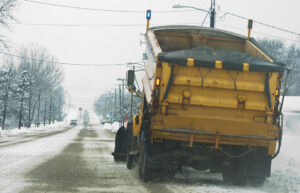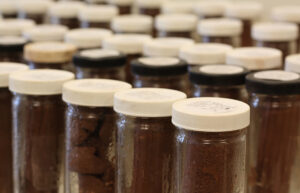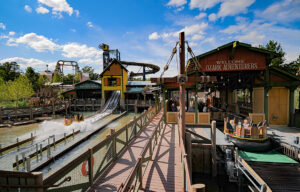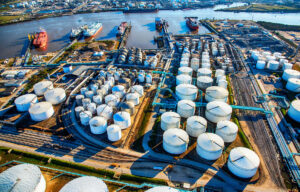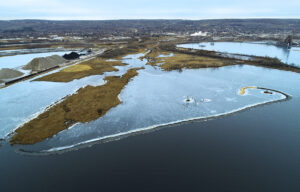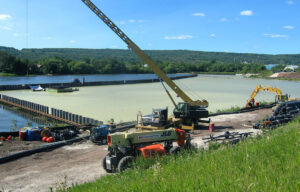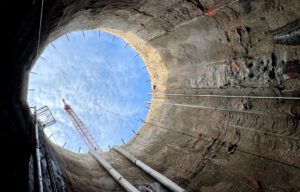 The innovative stormwater system at Westwood Hills Nature Center in St. Louis Park, Minnesota, improves the quality of water entering nearby Westwood Lake and provides an opportunity for visitors to learn about the hydrologic cycle. Barr designed trench drains, such as the one shown in the foreground, that allow runoff to cross sidewalks and continue flowing through the system.
The innovative stormwater system at Westwood Hills Nature Center in St. Louis Park, Minnesota, improves the quality of water entering nearby Westwood Lake and provides an opportunity for visitors to learn about the hydrologic cycle. Barr designed trench drains, such as the one shown in the foreground, that allow runoff to cross sidewalks and continue flowing through the system.
“Backyard” rainwater feature reduces downstream pollutants
In 2019, the City of St. Louis Park, Minnesota, planned a reconstruction of its Westwood Hills Nature Center. At the same time, the Bassett Creek Watershed Management Commission wanted to improve the quality of stormwater runoff to nearby Westwood Lake.
Barr conducted a feasibility study that helped advance both efforts: identifying a “backyard” rainwater feature that would improve water quality and help educate visitors about the hydrologic cycle. We worked with the city and its building design team to design and integrate the rainwater feature into the construction plan.
Stormwater runoff is collected from the nature center’s roof, patios, and sidewalks and is stored underground. The runoff is then pumped to the surface via hand pumps or a solar pump and discharged into a trough. The water flows from the trough into basins and channels, crossing sidewalks in trench drains until it reenters the underground storage. The water recirculates through the system until it infiltrates, evaporates, or is used through evapotranspiration.
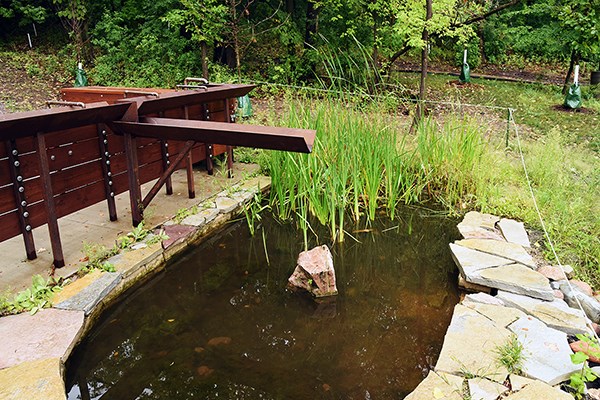
The system lowers the volume of water flowing off site, and therefore reduces pollutants entering Westwood Lake. A portion of the collected stormwater feeds into a transplanted bog on the nature center’s north side. The bog can be viewed up close and features numerous plant species as well as animals, including ducks, turtles, tadpoles, and many insects.
The bog installation is the second Barr has designed; the first is on the roof of the Minneapolis College of Art and Design. With most Minnesota bogs located in the northern part of the state, these two projects provide a convenient opportunity for local residents to experience bogs firsthand.
Interested in learning more about Barr's stormwater management capabilities? Contact our team.
About the author
Michelle Kimble specializes in site development and creative stormwater management design for public and private clients. She has designed green-infrastructure retrofits that manage runoff using permeable surfaces and living systems, including rainwater gardens, rainwater cisterns for irrigation, and tree-trench filter systems. Michelle has also performed stormwater and hydrologic modeling, developed stormwater pollution prevention programs and designed erosion-control best management practices.


